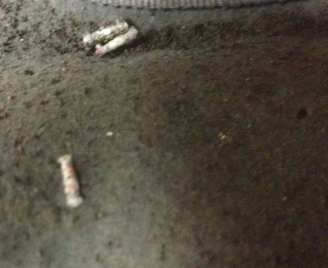Clothes moths are pests that may damage textiles and other materials. Animal fibers, including wool, fur, silk, feathers, felt, and leather, are their sole source of nutrition. These textiles contain keratin, a fibrous protein that the larva form of clothes moth can digest.
The case-making clothes moths are members of the Tineidae family of Lepidoptera, or fungus moths, which feed mostly on detritus, fungi, and lichens. Clothes moth larva feed on keratin, a protein present in natural fibers. They can cause significant damage to the home’s furnishings and stored textiles.
Infestations of clothes moths have become more widespread in recent years. The common clothes moth is more prevalent than the case-bearing clothes moth. Both moths are common indoor insects that can be found in upholstery, clothing, and carpets. Low light levels and unclean materials, such as carpets and rugs, are preferred by clothes moths because they contain critical nutrients and moisture for growth.
Casemaking Clothes Moth Life Cycle
Female moths produce eggs that hatch into tiny caterpillars in 4 to 10 days, either alone or in small clusters. Larvae grow through multiple stages (the case-making clothing moth has 5 to 45 instars) until they reach a length of about 12 inches. They pupate in silken casings that include fibers from the contaminated fabric as well as feces. The life cycle completes in as little as two months, but it can also take years.
Clothes moth larvae are creamy-white caterpillars that grow to be 1/2-inch long. Temperature, food availability, and other factors all influence the length of time it takes for a moth to develop (from one month to two years). The larvae go through five growth phases and can take anywhere from a month to two years to fully mature, depending on the circumstances. After that, they build cocoons and pupate for 10 to 50 days before emerging as adult moths.
Adults do not feed since their mouthparts have atrophied, and they crawl on textiles rather than fly to find a partner. They mate and lay eggs one to two days after emergence.
Casemaking Clothes Moth Eggs
The eggs of the casemaking clothes moth are oval in shape, ivory in color, and 1 mm (0.04 inch) in length. Single or in groups, mated females can lay 40-50 eggs. In the summer, eggs hatch in 4-10 days, and in the winter, they might take up to 30 days.
Clothes Moths prefer natural fibers like wool, silk, and even cotton for eggs. These moths place their eggs near a food source that the larvae can eat easily. These insects conceal themselves in the dark and lay small eggs, making it difficult to detect an infestation and allowing them to spread undetected.
Casemaking Clothes Moth Identification
The adults are identified by silvery gray-brown wings behind their bodies. These posterior wings are roof-like. The borders of both posterior and anterior wings are covered by the fringe of hairs. The forewings of these moths are brown colored with two little dark dots and one large dark spot. The wingspan of this moth is 9-16mm. Grey hairs cover the top of the head. Grey hairs cover the top of the head.
When the larvae of the case-making clothes moth consume, they always have a silken case with them. They never abandon their silken casing, which grows in size as they mature. If the larvae are disturbed they feed on the case. The color of this case is just like the fabric which the larvae have consumed.
Casemaking Clothes Moth Trap
Trapping is a reasonably simple method for detecting and controlling a case-making clothing moth infestation. The case-making clothing moth can be caught with pheromone traps. Male moths are drawn to the trap by the sex pheromone and become caught on the sticky edges. Other moth species will not be attracted to the pheromone since it is only attracted to clothes moths. Clothing moth pheromone traps may be found in most hardware stores.
These case-making moths are caught by Placing traps in closets and other places where garments are stored. Trapping not only allows us to detect the existence of clothes moths, but it also allows us to exert some control, as trapped males are unable to reproduce. However, if we capture moths, we need also to take other precautions to protect the items, such as dry cleaning or laundry.



